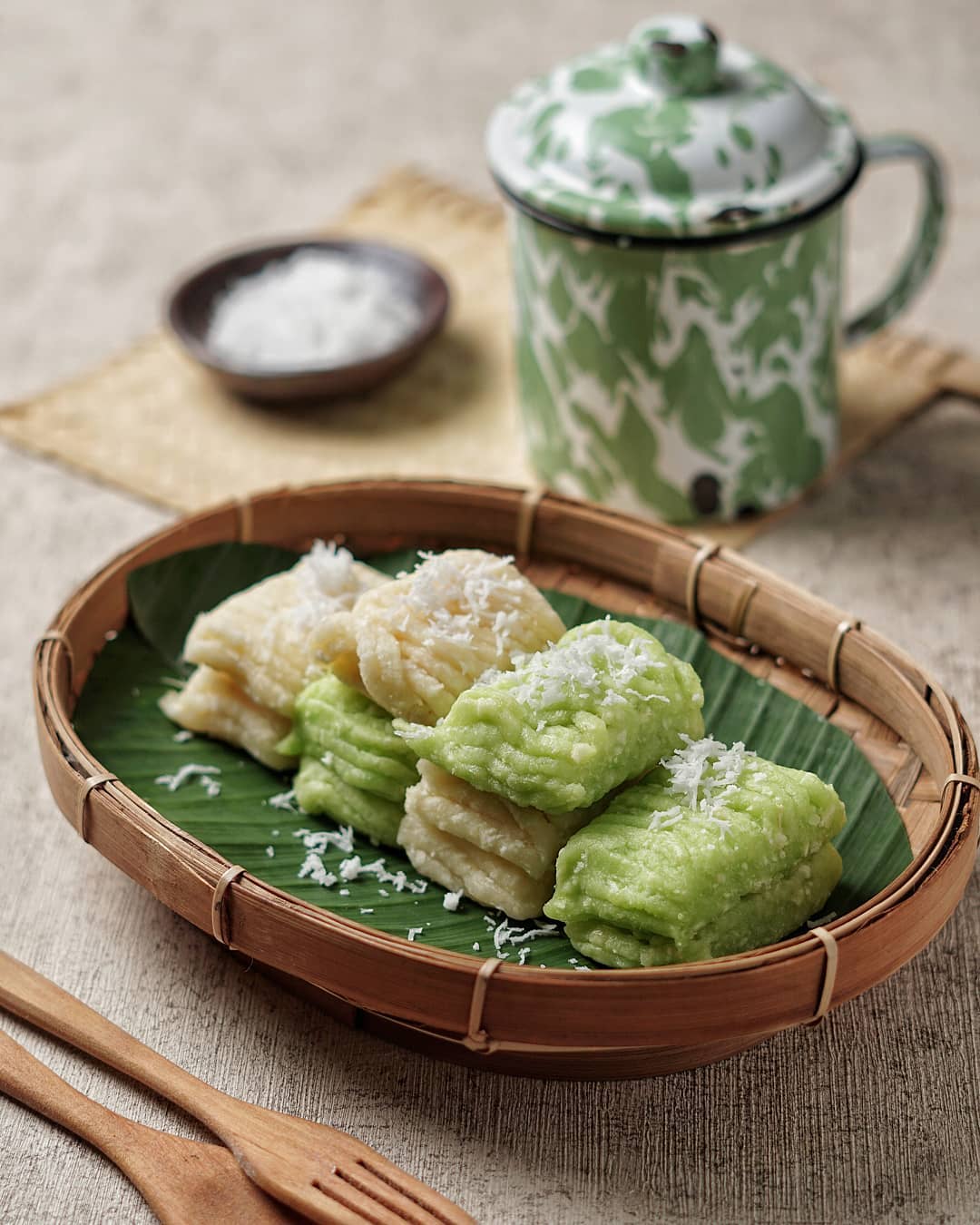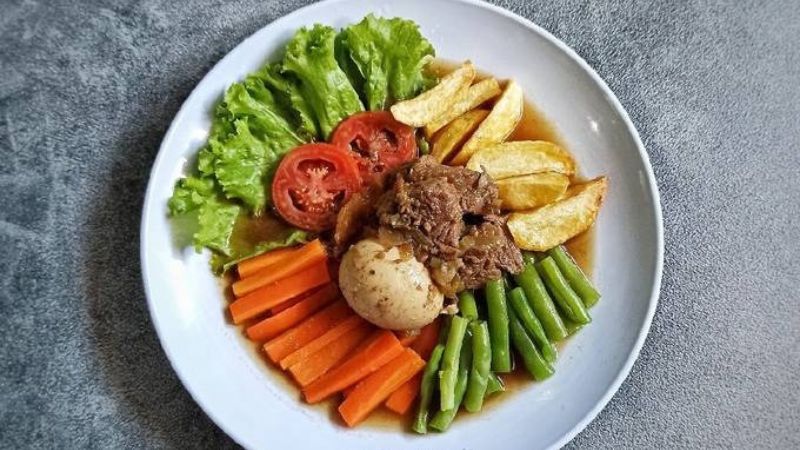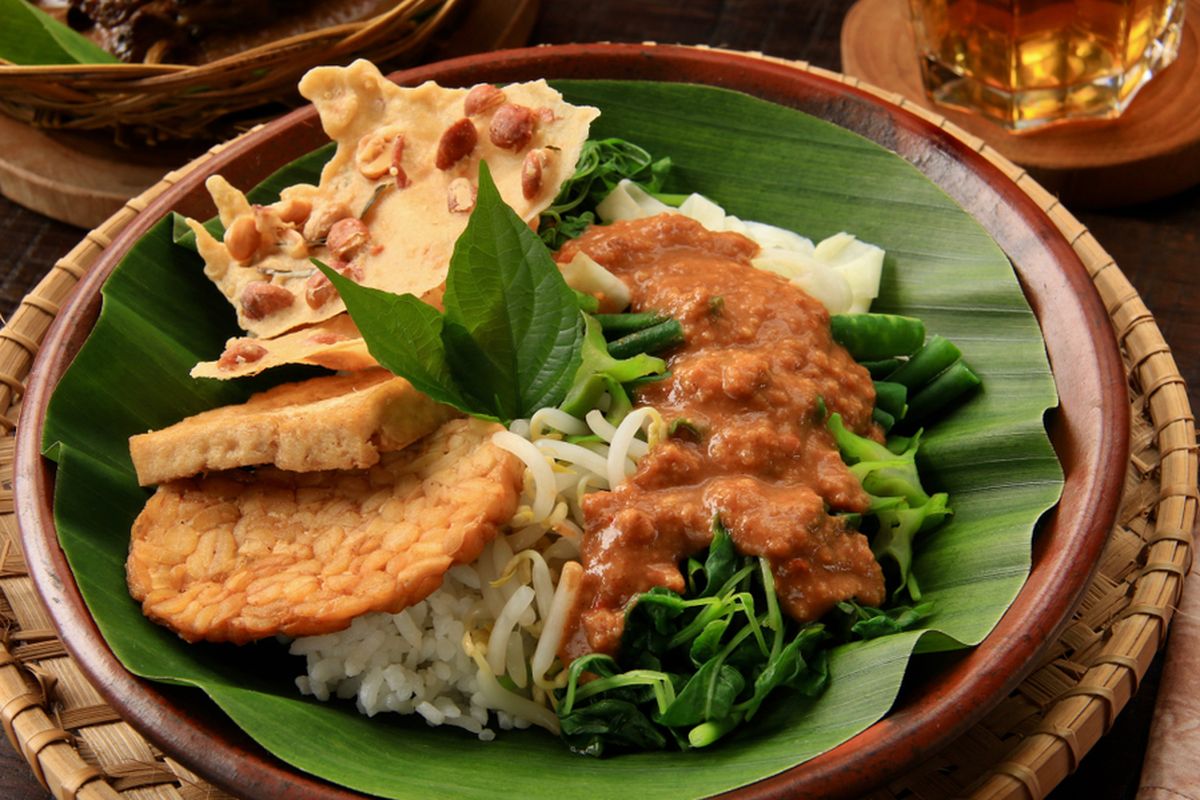
Of course. Here is a 1,200-word article about Nasi Pecel.
Nasi Pecel: The Vibrant Soul of a Javanese Salad
In the sprawling culinary landscape of Indonesia, a nation of over 17,000 islands, few dishes capture the essence of daily life, community, and rustic elegance quite like Nasi Pecel. At first glance, it might be mistaken for a simple salad—a humble mound of steamed rice accompanied by blanched vegetables and a protein or two. But to dismiss it as such would be to miss the point entirely. Nasi Pecel is not just a dish; it’s a cultural institution, a breakfast of champions, and a vibrant tapestry woven from the very soil and soul of Java.
At its heart, Nasi Pecel is a symphony of textures and flavors. It is a complete meal, perfectly balanced and deeply satisfying. To understand its magic, one must deconstruct its core components, each playing a vital role in the final composition.
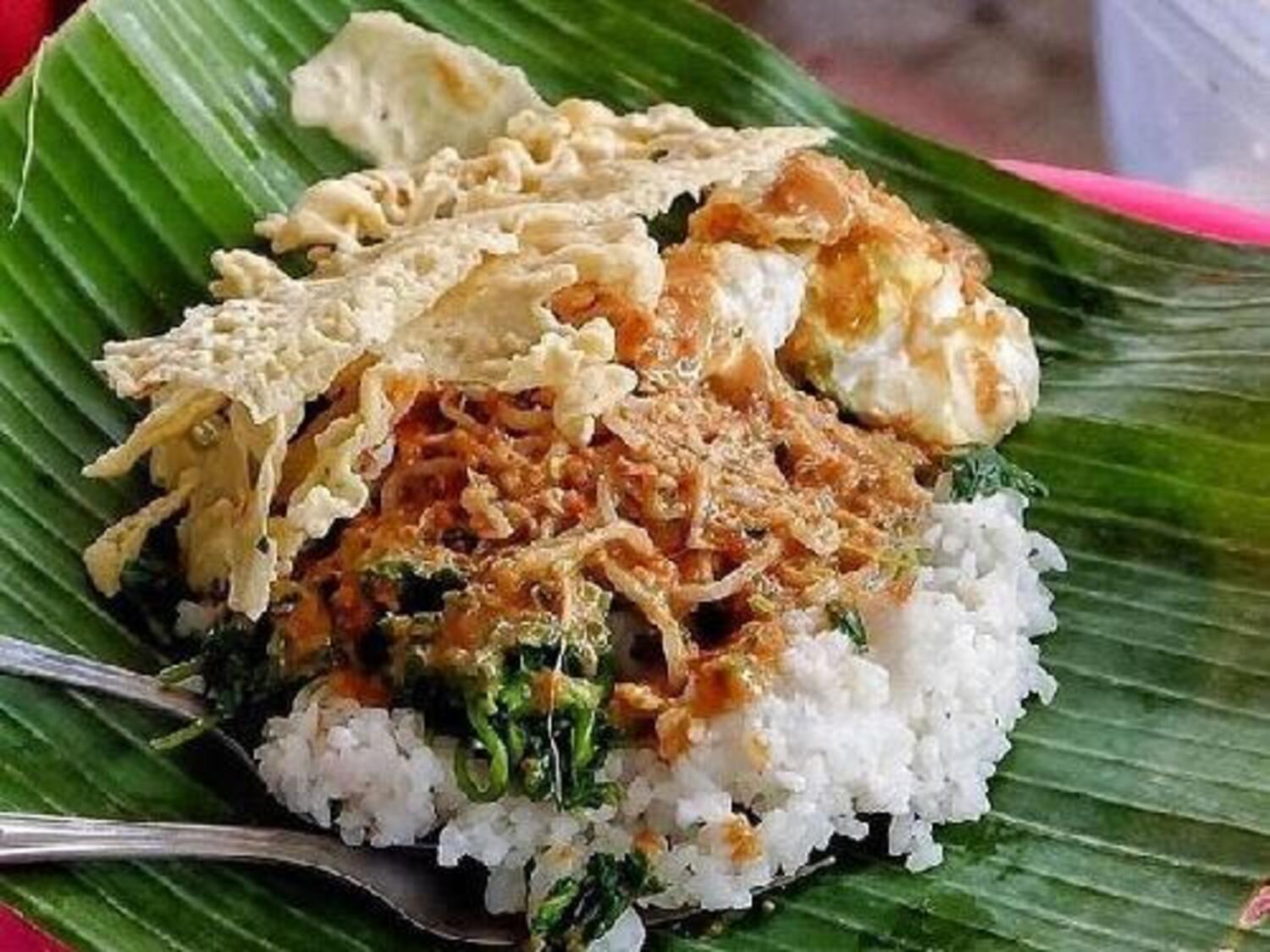
The Anatomy of a Perfect Plate
The foundation, as the name Nasi Pecel suggests, is nasi (steamed rice). It’s the neutral, fluffy canvas upon which the rest of the masterpiece is painted. The rice serves to temper the richness of the sauce and provide the comforting carbohydrate base that fuels the day for millions of Indonesians.
Next comes the pecel itself, the medley of vegetables. Unlike a Western salad of raw greens, the vegetables in pecel are lightly blanched—plunged into boiling water for a mere moment before being shocked in cold water. This process, known as dikelan in Javanese, tenderizes the vegetables while preserving their vibrant color, crisp texture, and nutritional value. The selection varies by region and season, but a classic assortment includes spinach (bayam), bean sprouts (toge), long beans (kacang panjang), cassava leaves (daun singkong), and the delicate, frilly leaves of the papaya flower (kembang kates), which lend a pleasant, mild bitterness.
But the undisputed star of the show, the element that elevates Nasi Pecel from a mere collection of ingredients to a culinary icon, is the sambal pecel—the glorious peanut sauce. This is no ordinary peanut dressing. It is a thick, complex, and aromatic concoction that is simultaneously sweet, savory, spicy, and tangy. The sauce begins with high-quality peanuts, roasted to a deep golden-brown and then ground into a coarse or smooth paste. This peanut base is then infused with a host of aromatic ingredients: fiery red chilies, fragrant garlic, shallots, earthy galangal, and a hint of medicinal kencur (aromatic ginger). The sweetness comes from rich, dark palm sugar (gula jawa), while the characteristic tang is derived from tamarind pulp (asam jawa). The final, defining note is the bright, citrusy perfume of kaffir lime leaves (daun jeruk purut), which cuts through the richness and ties all the flavors together. The resulting sauce is a powerhouse of flavor, a testament to the Javanese philosophy of balancing the five tastes.
Finally, a plate of Nasi Pecel is never complete without its lauk pauk (side dishes) and garnishes. The most essential companion is the peyek, a large, impossibly thin and crispy cracker. Typically made from rice flour batter and studded with whole peanuts or tiny dried anchovies (teri), the peyek provides the crucial crunchy counterpoint to the soft rice and tender vegetables. Other popular side dishes include fried tempeh and tofu, a hard-boiled or fried egg, empal (sweet and savory fried beef), or ayam goreng (fried chicken).

A Dish Steeped in History and Place
The origins of Nasi Pecel are deeply rooted in Central and East Java, with historical accounts tracing it back to the Mataram Sultanate. Legend tells of Ki Gede Pamanahan, a key figure in the founding of the kingdom, being served a dish of blanched vegetables with a peanut sauce by the local ruler of what is now Ponorogo. The name “pecel” is believed to derive from a Javanese word describing the act of squeezing or pressing water from the blanched vegetables before serving.
Over centuries, the dish has evolved and migrated, resulting in distinct regional variations, each fiercely proud of its unique character.
-
 Pecel Madiun: Hailing from the city of Madiun in East Java, this is arguably the most famous and widely recognized version. Pecel Madiun is known for its robustly spicy and savory sauce, with a pronounced aroma of kaffir lime leaves. It is traditionally served on a pincuk, a folded banana leaf that acts as a biodegradable plate, imparting a subtle, earthy fragrance to the warm rice.
Pecel Madiun: Hailing from the city of Madiun in East Java, this is arguably the most famous and widely recognized version. Pecel Madiun is known for its robustly spicy and savory sauce, with a pronounced aroma of kaffir lime leaves. It is traditionally served on a pincuk, a folded banana leaf that acts as a biodegradable plate, imparting a subtle, earthy fragrance to the warm rice.- Pecel Blitar: Just a short distance from Madiun, the Pecel from Blitar offers a contrasting profile. Its peanut sauce is typically sweeter and less spicy, appealing to those with a milder palate.
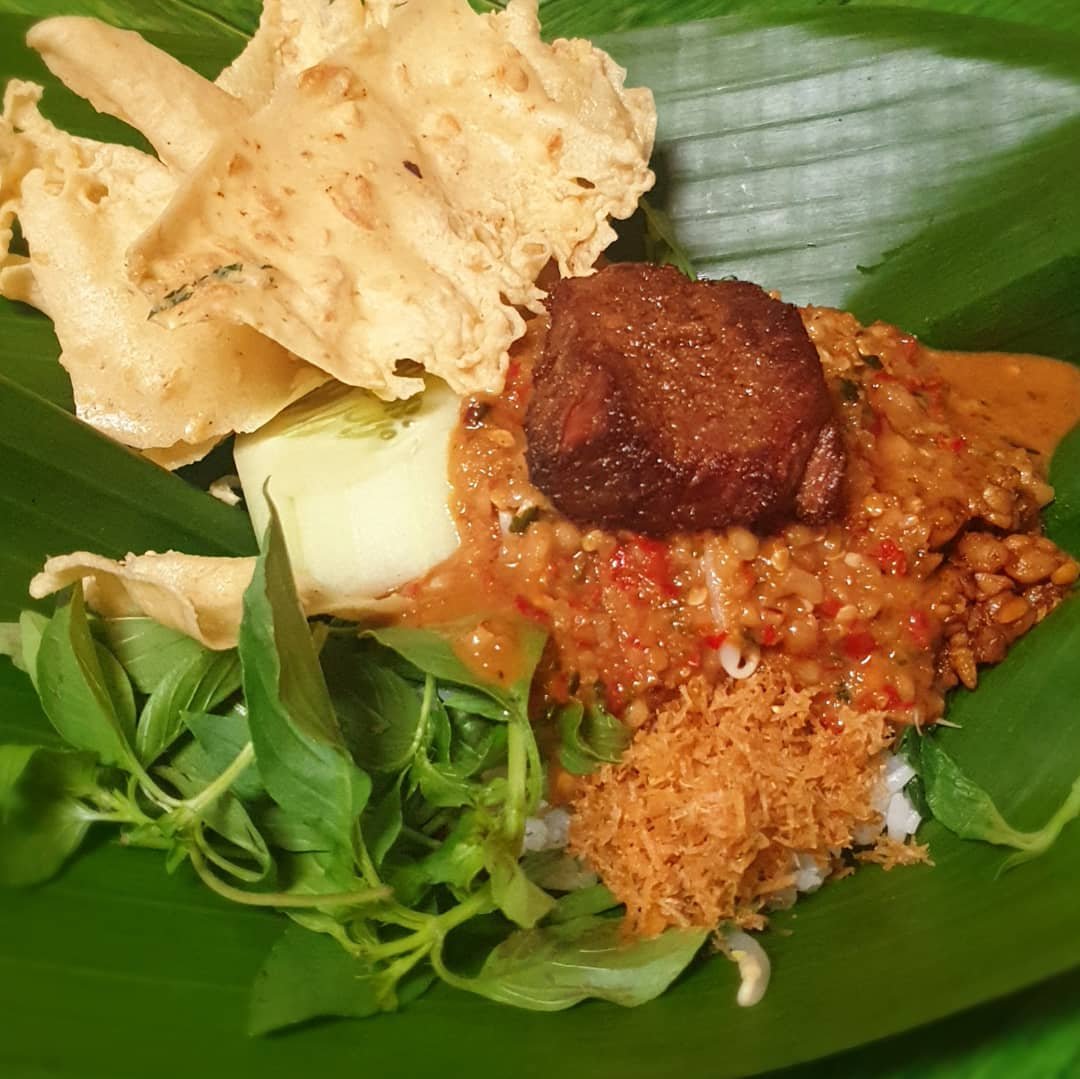
- Pecel Nganjuk: This variation is distinguished by its liberal use of kencur (aromatic ginger), which gives the sauce a unique, almost medicinal aroma and a slightly peppery finish. The flavor is bold and unforgettable.
- Pecel Tumpang: From the region of Kediri, this version features a unique twist where the traditional peanut sauce is often mixed or served alongside sambal tumpang, a pungent and savory sauce made from fermented tempeh (tempe semangit), giving the dish an entirely new dimension of umami.
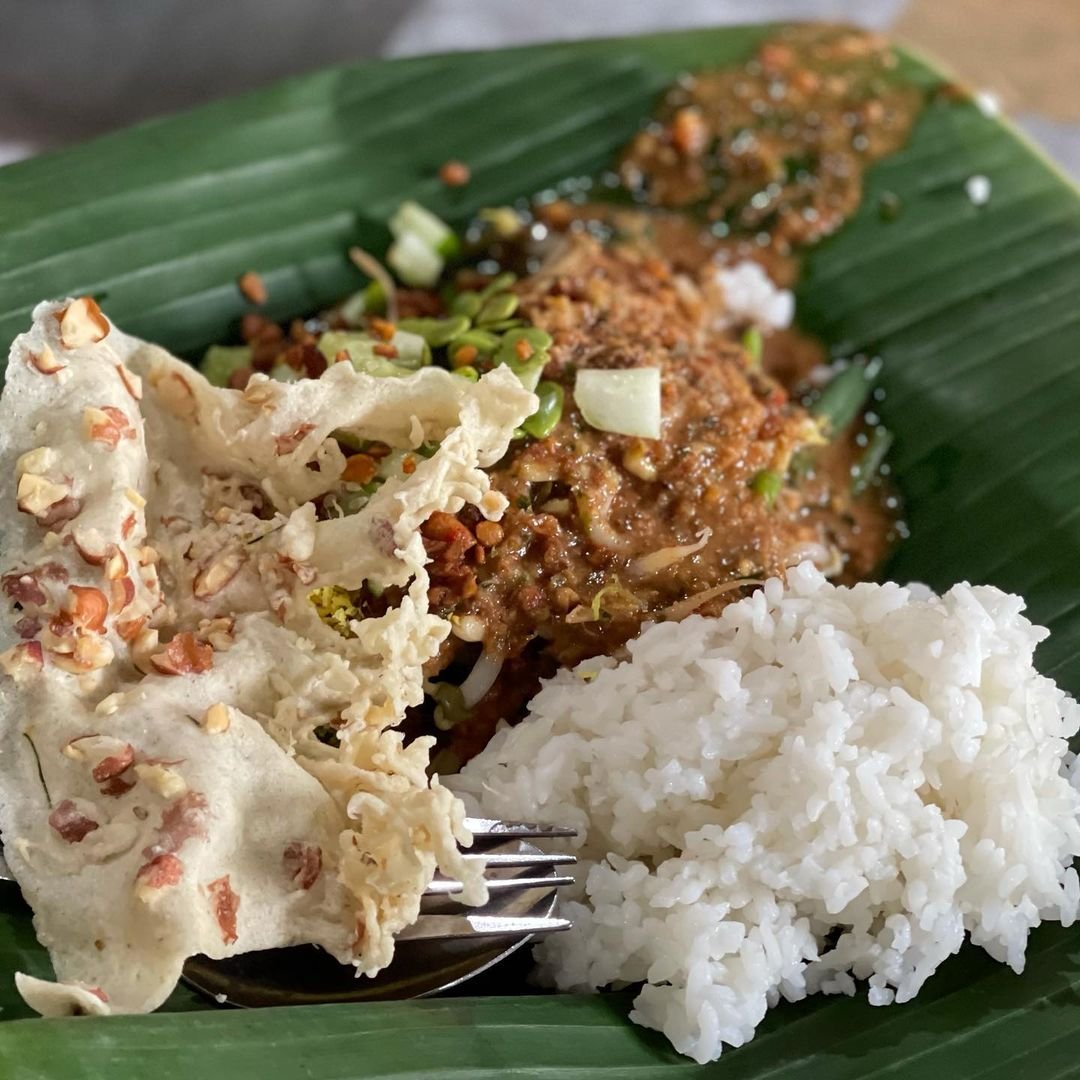
More Than a Meal: A Cultural Touchstone
In Java, Nasi Pecel is intrinsically linked with the morning ritual. As the sun rises, traditional markets (pasar) and street-side stalls come alive with the sight of mbok-mbok (a respectful term for older women) setting up their pecel stations. With practiced hands, they deftly assemble each plate, ladling the rich, warm sauce over a vibrant pile of greens. These vendors are more than just cooks; they are community pillars, their stalls serving as gathering spots where neighbors catch up on local gossip over a hearty, healthy breakfast.
The dish represents a philosophy of simplicity and resourcefulness. It utilizes locally grown vegetables, humble protein sources like tempeh, and a sauce made from pantry staples. It is a celebration of the earth’s bounty, transformed into a nourishing and delicious meal that is accessible to everyone, from laborers to office workers.
For the Indonesian diaspora scattered across the globe, Nasi Pecel is a powerful symbol of home. The distinct aroma of the peanut sauce, the crunch of the peyek, and the familiar combination of flavors can instantly transport them back to a Javanese morning. Many families pass down their secret sambal pecel recipes through generations, and a jar of homemade or store-bought pecel paste is a cherished item in any Indonesian kitchen abroad.
The Pecel Experience: A Guide for the Uninitiated
To eat Nasi Pecel like a local is to embrace the mix. Do not eat each component separately. The true joy lies in using your spoon to blend the rice, vegetables, and sauce together, ensuring every mouthful is a perfect combination of soft, tender, and creamy. Break off a piece of the large peyek cracker and use it as an edible scoop, adding that all-important crunch.
The classic beverage pairing is a simple teh tawar hangat (warm, unsweetened tea), which cleanses the palate without competing with the complex flavors of the dish. For those who prefer something cold, a glass of es jeruk (iced sweet orange juice) offers a refreshing citrusy contrast to the spicy sauce.
While making the peanut sauce from scratch can be a labor of love, the modern world has made it incredibly accessible. Ready-to-use sambal pecel paste is widely available in block or paste form. Simply dissolve a portion in warm water, stirring until you reach your desired consistency, and you have an authentic-tasting sauce in minutes. This convenience has allowed the joy of Nasi Pecel to spread far beyond the borders of Indonesia.
In conclusion, Nasi Pecel is a dish that tells a story. It speaks of the fertile lands of Java, the ingenuity of its people, and the comfort of community. It is a testament to the fact that the most profound culinary experiences often come not from elaborate techniques or expensive ingredients, but from the masterful combination of simple, honest elements. It is a vibrant, healthy, and deeply satisfying meal that nourishes the body and comforts the soul—a true taste of Indonesia.

Article about Nasi Pecel. pictures collections gallery
Article about Nasi Pecel. is a nice pictures and stock photo for your computer desktop or your smartphone device (ipad, tablet, blackberry, iphone, and other device) and also for your personal use. Free available for desktop wallpaper or additional image collections for your all needs. And was uploaded by admit at date July 1, 2025. You can download it in your computer by clicking download button to save image... have nice day and have fun guys..
This 1 image in featured post from 0 Photos/images Gallery and awesome picture selections about Article about Nasi Pecel. is available to download. "Download & Save" images/pictures/wallpapers now and this Is one of the post that listed in packed to Category is Foods directory, with image dimension/resolution size is 1300 × 956 px and size image/picture file is 151 KB with original link post ID is : https://powae.pw/of-course-here-is-a-1200-word-article-about-nasi-pecel/. Get download/save images in post and gallery, "download" images or "preview" it on a bigger image for spesification sample in Large size (full attachment size) here : [Download & View to Large size]. Just Simple way, in thumbnail or in Gallery. *Click images to view Large Size.We collect this wonderful image from online and choose one of the best for you. Pictures collection that posted here was carefully chosen and published by author after choosing the ones which are best among the others. So, ultimately we make it and here these list of best image for your inspiration and informational reason regarding the Article about Nasi Pecel. as part of blogsite exclusive updates collection. So, take your time and find the best informations and pictures posted here that suitable with your needs and use it for your own collection and personal use. About Image information: Image has been submitted and You are able to give your opinion as evaluations to our web site value.
Don't forget to comment if you interest with this images, you can share this post to social media like as facebook, twitter, google+, pinterest, stumbleupon, and more. just click social media buttons for share this post Article about Nasi Pecel. Now. :)
Thanks for your visit, I hope you happy come to opo wae, wis opo wae, and get what you're looking for. And hope sometimes you will come back again here. All you need to do is help us develop by discussing this Article about Nasi Pecel. if you like it "leave your comment". have fun, Thank you.



